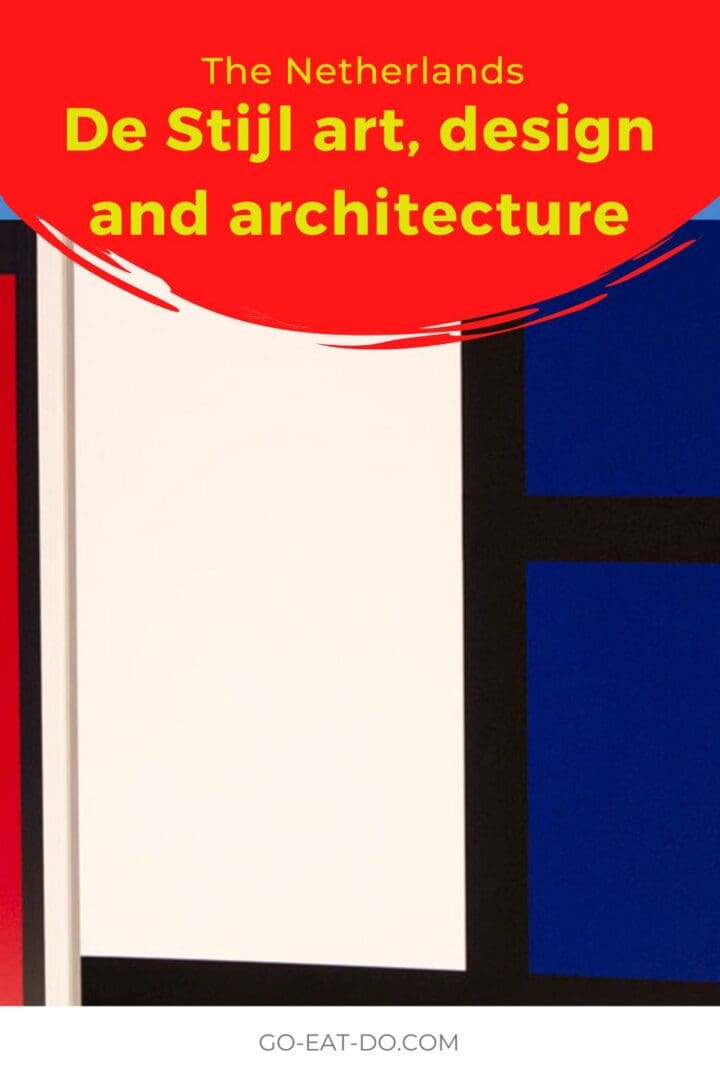Stuart Forster looks at the influential De Stijl architecture, art and design movement in the Netherlands and the best places to visit to see examples.
Disclosure: Some of the links below and banners are affiliate links, meaning, at no additional cost to you, I will earn a commission if you click through and make a purchase.
Originating in the Netherlands in 1917, De Stijl had a significant influence on art and design in the years that followed. At its core, De Stijl promoted simplification and abstraction.
It evolved during the most brutal war that the world had seen. De Stil was a reaction to war. Its proponents hoped for a better world, one in which artists and designers could positively impact society. De Stijl influenced the design of buildings, everyday objects and typography.
De Stijl is most commonly associated with abstract compositions featuring primary colours by the likes of Piet Mondrian, Bart van der Leck and Theo van Doesburg. Van Doesburg published the journal De Stijl, which promoted the principles and theories of associated artists and designers.
To find out more about De Stijl, I spoke with Marjory Degen, a co-curator of The Colours of De Stijl exhibition. The exhibition was held at the Kunsthal KADE in Amersfoort, the Netherlands, in 2017.
De Stijl movement
“Its impact has been enormous. In the 1920s, when De Stijl magazine first appeared, it was just very small. There were no more than 30 subscribers to the magazine, so it was very small. But after most of the De Stijl artists died it grew out to be one of the most important art movements in the 20th and 21st centuries,” explained Marjory.
“It has influenced not only the visual arts but also design and architecture. So its impact is enormous,” she emphasised.
20th-century art movements
De Stijl came into existence shortly after the Constructivism movement had begun to emerge in Russia. The Bauhaus was established in Germany around the same time. The name of the Bauhaus tends to have far greater resonance internationally than that of De Stijl.
“What works for the Bauhaus is that it was an actual school,” suggested Marjory.
The institution was founded by Walter Gropius in Weimar in 1919. Students who studied at the Bauhaus – first in Weimar, then in Dessau and Berlin – spread its principles throughout the world. They influenced the design of everyday objects, including teapots, light shades and doorknobs. Bauhaus-influenced architecture can be seen in cities as far-flung as Chicago, London and Tel Aviv.
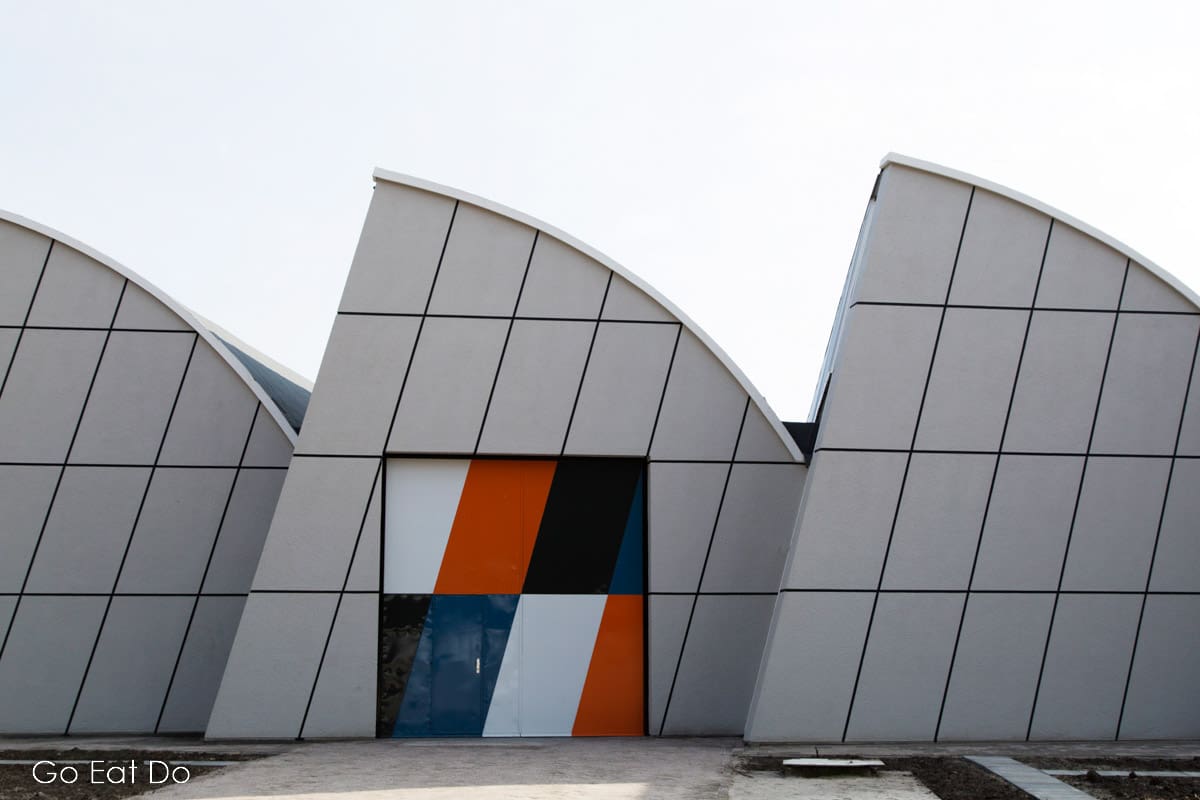
De Stijl in the Netherlands
By comparison, De Stijl remained relatively small and based in the Netherlands.
“They tried to become international but that did not really work out that well and they were quite strict in their beliefs. And where you see many theories being able to live together in the Bauhaus school, De Stijl is just one theory and a very strict one – the new building theory. So I think that limited De Stijl quite a lot,” explained Marjory.
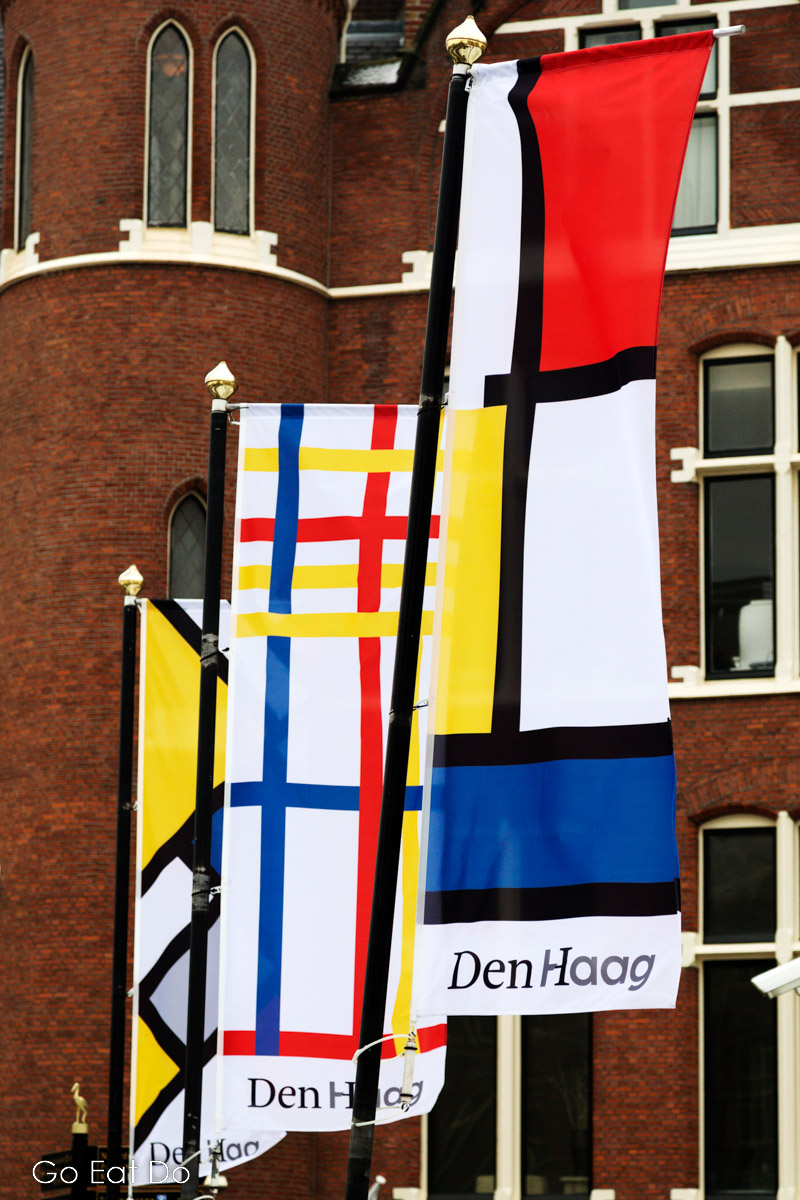
De Stijl architecture and design
Notably, De Stijl’s principles influenced the designs of J.J.P. Oud and Gerrit Rietveld. Oud was the architect of the Café de Unie in Rotterdam and also designed the National Monument on Dam Square in Amsterdam. Rietveld is renowned for his Red and Blue Chair and the Rietveld-Schröder House in Utrecht.
“It’s been a belief for a very long time, in many different countries all over the world, De Stijl and Piet Mondrian are designers and not artists,” said Marjory.
“I think it’s because Mondrian was the first to search for harmony in this way, with only the horizontal or vertical lines and the primary colours, and not looking for a centre in a painting. Usually, when you look at a painting, you have a centre, surrounded by the rest, but you see the subject. And for Mondrian, there’s no middle, there’s no square in the middle – that’s the whole point. And that became one of the leading elements for design in the 20th century,” she continued.
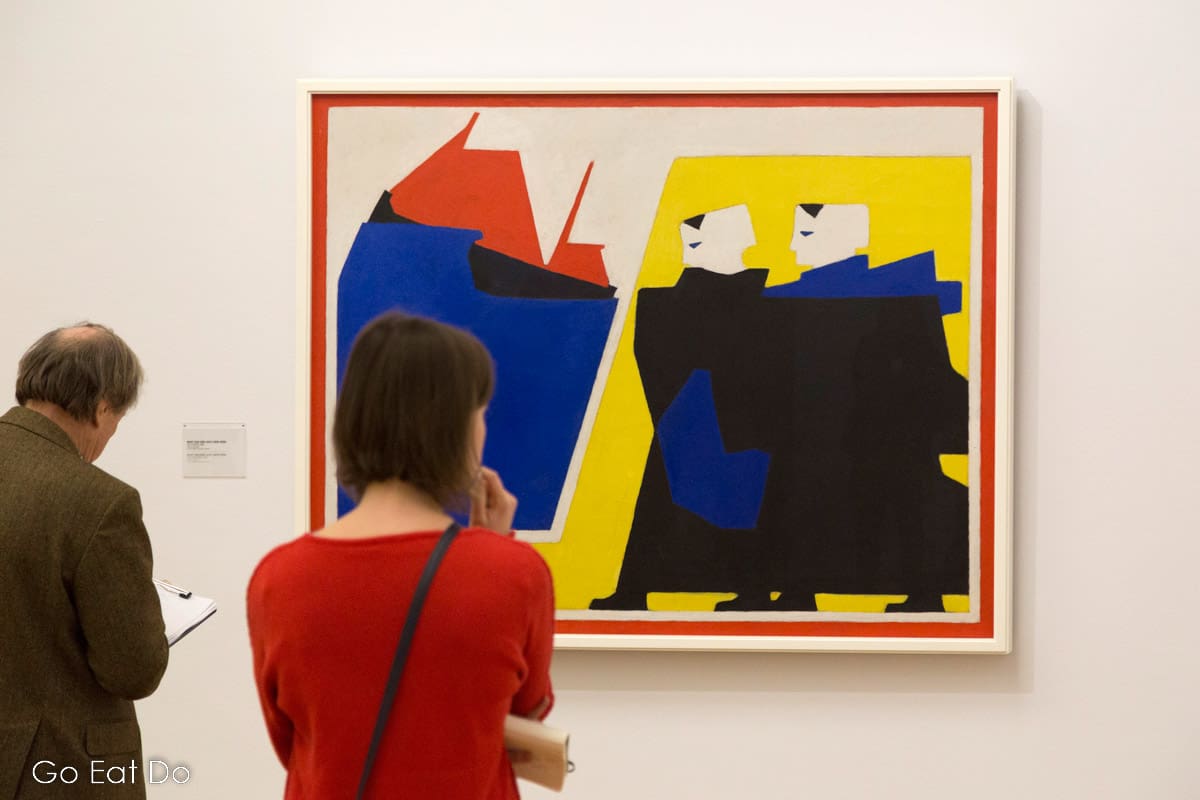
War and De Stijl
“The First World War was a very big influence on De Stijl because, without it, it couldn’t have existed. Mondrian was living in Paris since 1912 and he went back to the Netherlands to visit his sick father in 1914. Then the war broke out and he was forced to stay in the Netherlands and he moved to a little village called Laren,” said Marjory.
She continued: “Many artists lived there and that’s where he met Bart van der Leck, one of the co-founders of De Stijl. And it was through Bart van der Leck that he met Theo van Doesburg and Vilmos Huszár, the other two founders of De Stijl. Then they came together once a week to discuss theories and that’s where the idea grew of the magazine.”
“With the exception of Mondrian, De Stijl believes that art should be there for the people. So it’s not just painting or sculpting, but it’s architecture, it’s design. It’s interior design, mainly. And it all works together to make Gesamtkunstwerk for the people. And that’s also the belief of Russian Constructivism,” she added.
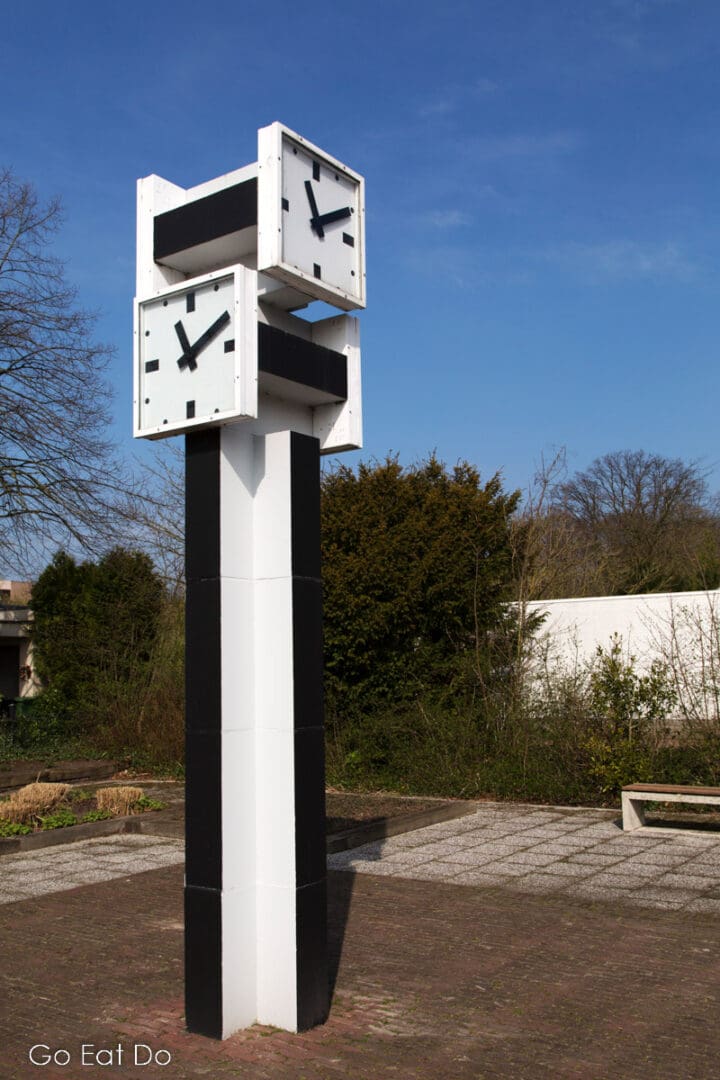
Piet Mondrian and De Stijl
Piet Mondrian was born at a schoolhouse in Amersfoort. That building, now known as the Mondriaanhuis, has been transformed into a museum that tells his life story. Mondrian changed the spelling of his name in 1911, dropping an ‘a’.
“Mondrian was so against Germany in the First World War he even wouldn’t accept mail – letters, postcards or whatever – from German addresses. He would not have any contact with Germans or Germany whatsoever…Mondrian had a very strong personality and influenced the other De Stijl artists quite a lot,” said Marjory.
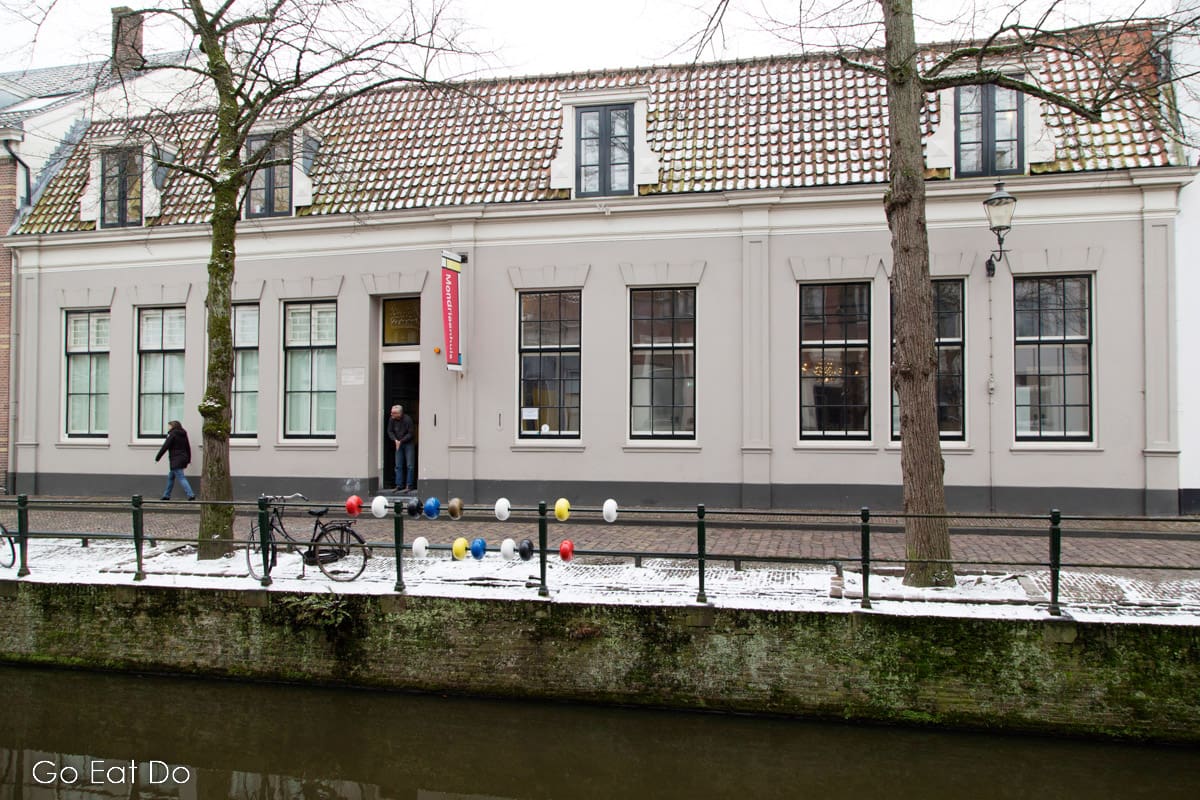
What is De Stijl?
“It’s not a movement at all. It’s not a style at all. De Stijl, which is the Dutch translation for ‘style’, it’s a manner. It’s a way of people working together and being able to express their beliefs and theories which are opposed to other theories in society at the time. But there are more differences than there are similarities between the artists,” summarised Marjory.
De Stijl in the Netherlands
Several museums in the Netherlands display De Stijl artworks and applied designs. They include:
Kröller-Müller Museum in Otterlo
Located in Hoge Veluwe National Park, the Kröller-Müller Museum’s collection includes works by Piet Mondrian, Theo van Doesburg, Gerrit Rietveld and Bart van der Leck. Helene Kröller-Müller was a patron of Van der Leck. This explains why the museum was able to acquire 42 of his paintings and approximately 400 drawings.
Kunstmuseum in The Hague
Housed within an impressive building designed by Hendrik Petrus Berlage, the Kunstmuseum is home to the world’s largest collection of paintings by Piet Mondrian. The works displayed include his unfinished masterpiece, Victory Boogie Woogie.
You can view pieces by Theo van Doesburg, J.J.P. Oud, Gerrit Rietveld and Bart van der Leck at the Kunstmuseum.

Museum de Lakenhal in Leiden
Theo van Doesburg began publishing De Stijl in Leiden. The city’s Museum De Lakenhal holds a first edition of the magazine and displays compositions by Van Doesburg.
Museum Drachten
A 90-minute drive northeast of Amsterdam, Drachten’s Papegaaienbuurt district is the location of several De Stijl-influenced houses. Step inside the Van Doesburg-Rinsema House at Torenstraat 3.
Further examples of work by Van Doesburg plus Evert and Thijs Rinsema are displayed at Drachten’s Museum Dr8888.
Rietveld Schröder House in Utrecht
The Rietveld Schröder House in Utrecht is one of the Netherlands’ UNESCO World Heritage Sites. It was built in 1924 after Truus Schröder-Schräder commissioned Gerrit Rietveld to design a family home.
Rijksmuseum in Amsterdam
The Rijksmuseum’s expansive collection includes De Stijl-influenced compositions.
Stedelijk Museum in Amsterdam
Amsterdam’s Rijksmuseum is at the Museumplein, a short distance from the Van Gogh Museum. The collection includes several works by artists associated with De Stijl.
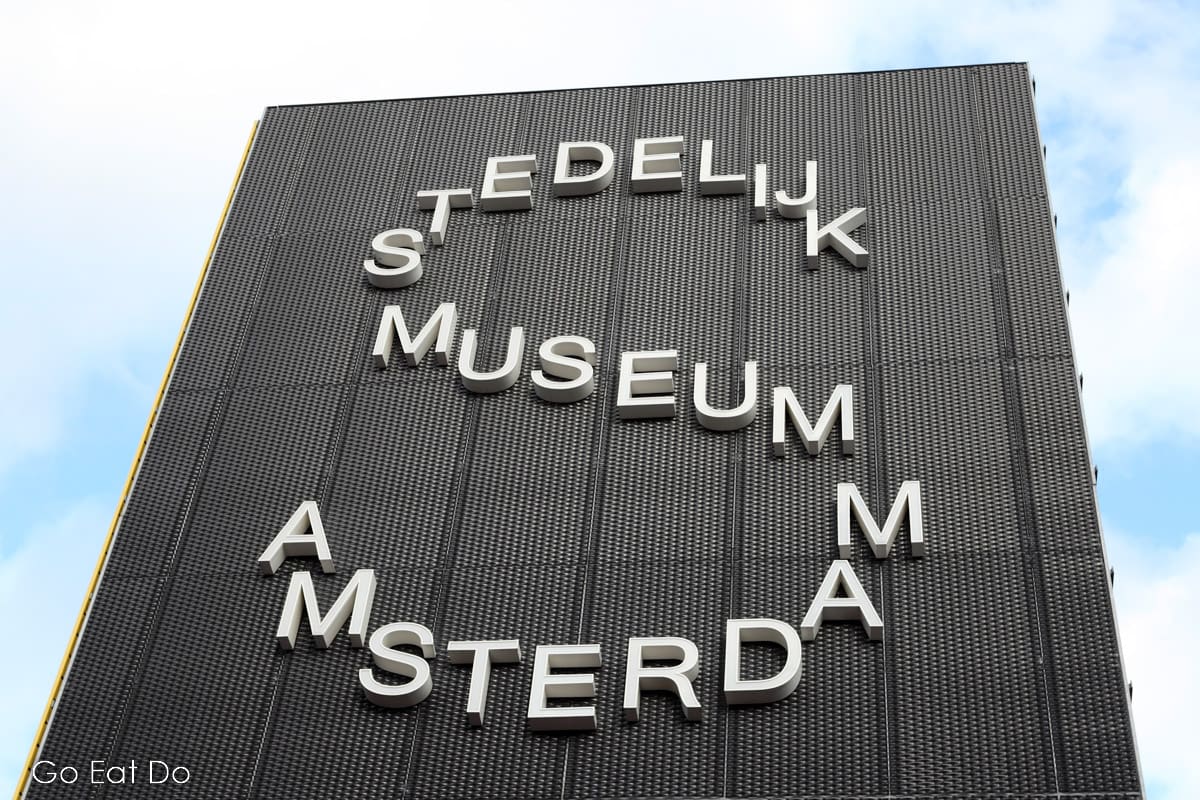
Singer Laren Museum
The village of Laren is today the location of a museum named after the artists Anna and William Henry Singer. Work by Bart van der Leck can be viewed at the Singer Laren.
Van Abbemuseum in Eindhoven
The collection of Eindhoven’s Van Abbemuseum includes composition’s by Piet Mondrian.
De Stijl locations in the Netherlands
The map below shows museums and locations associated with De Stijl in the Netherlands:
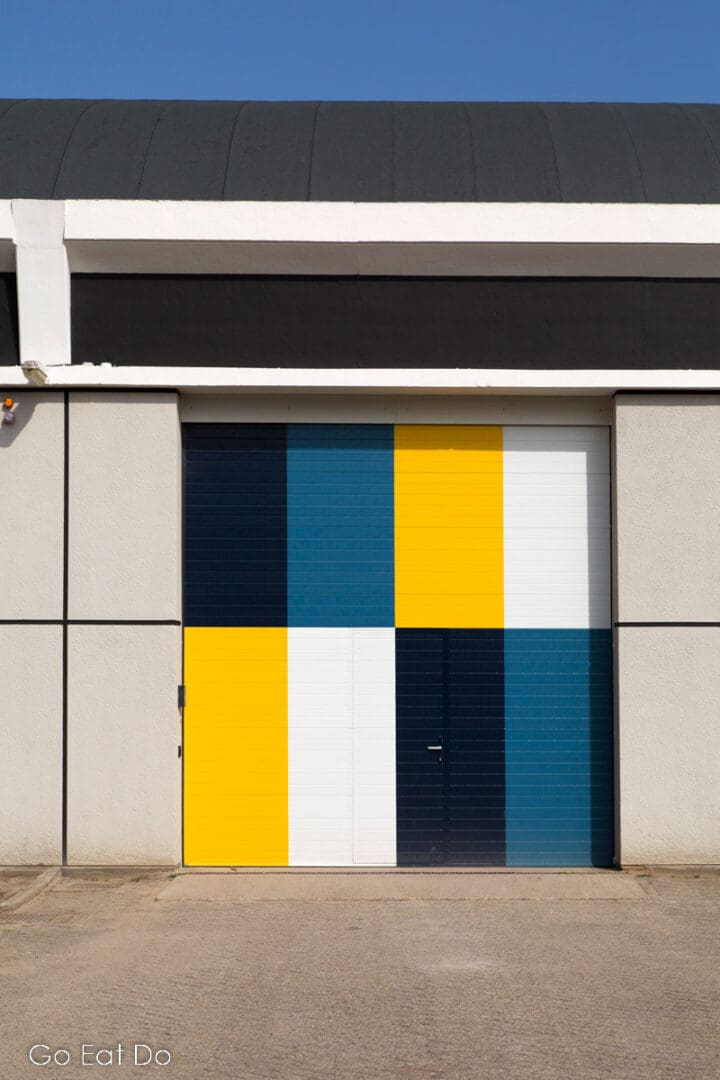
Travel to the Netherlands
Amsterdam’s Schiphol Airport is the main entry point for travellers arriving by air.
Eurostar trains run to Amsterdam and Rotterdam from London St Pancras International. Trains are an effective way of travelling between Dutch cities.
DFDS Ferries operates a route between Newcastle and Amsterdam.
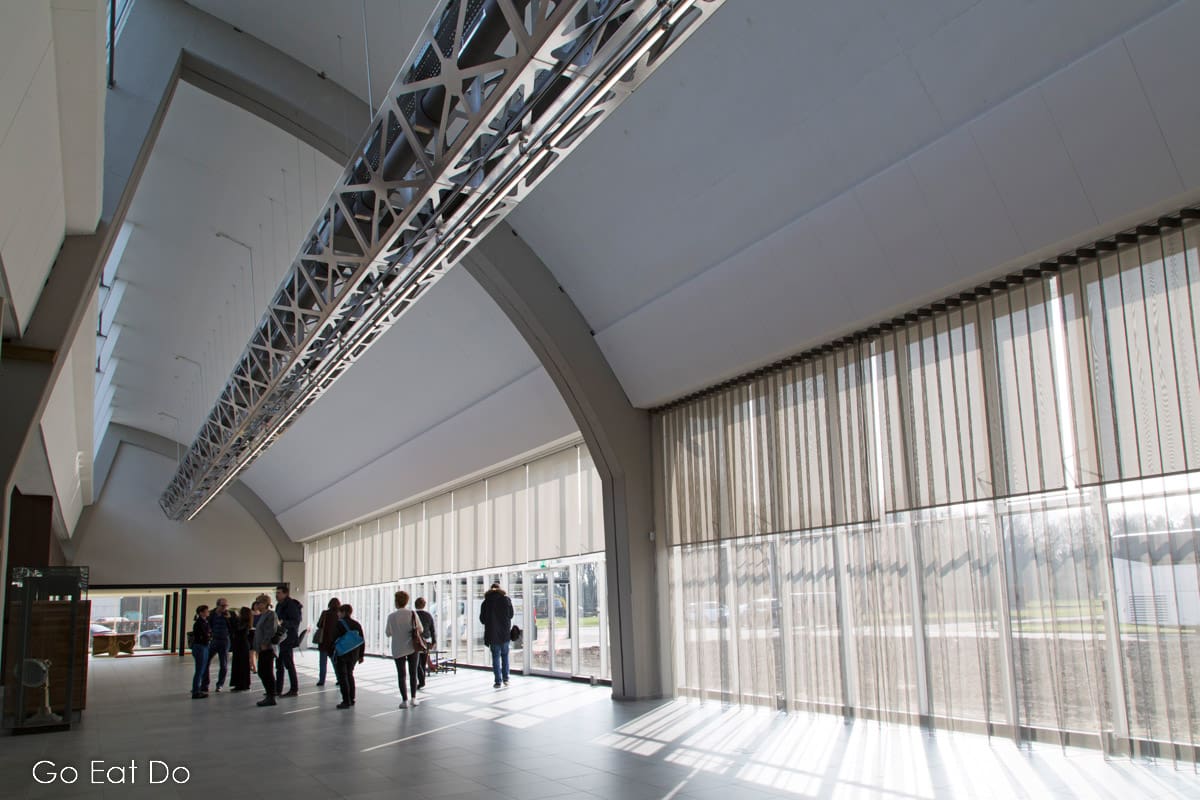
Hotels in the Netherlands
Search for accommodation in the Netherlands and book hotels using the map below:
Books about De Stijl
Interested in knowing more about De Stijl and the Netherlands? The following books are available from Amazon:
Mondrian by Susanne Deicher.
Doesburg by Matthew Brown.
Beginning Modernism by Jeff Wallace.
Lonely Planet Netherlands guidebook.
Rough Guide to the Netherlands.
Further information
Thanks for visiting Go Eat Do and reading this post about De Stijl architecture, art and design in the Netherlands. You may be interested in reading about the exhibition 100 Years After De Stijl in Leiden and art museums in the Netherlands.
Stuart Forster, the author of this post, is an award-winning travel writer based in North East England. He has written about destinations in the Netherlands for CNN Travel, Rough Guides and The Independent. He was named Travel Writer of the Decade at the 2020 Netherlands Press Awards.
Photos illustrating this post are by Why Eye Photography.
‘Like’ the Go Eat Do Facebook page to see more photos and content.
If you enjoyed this post, please sign up for the free Go Eat Do newsletter. It’s a hassle-free way of getting links to posts once a month.
